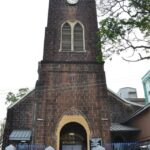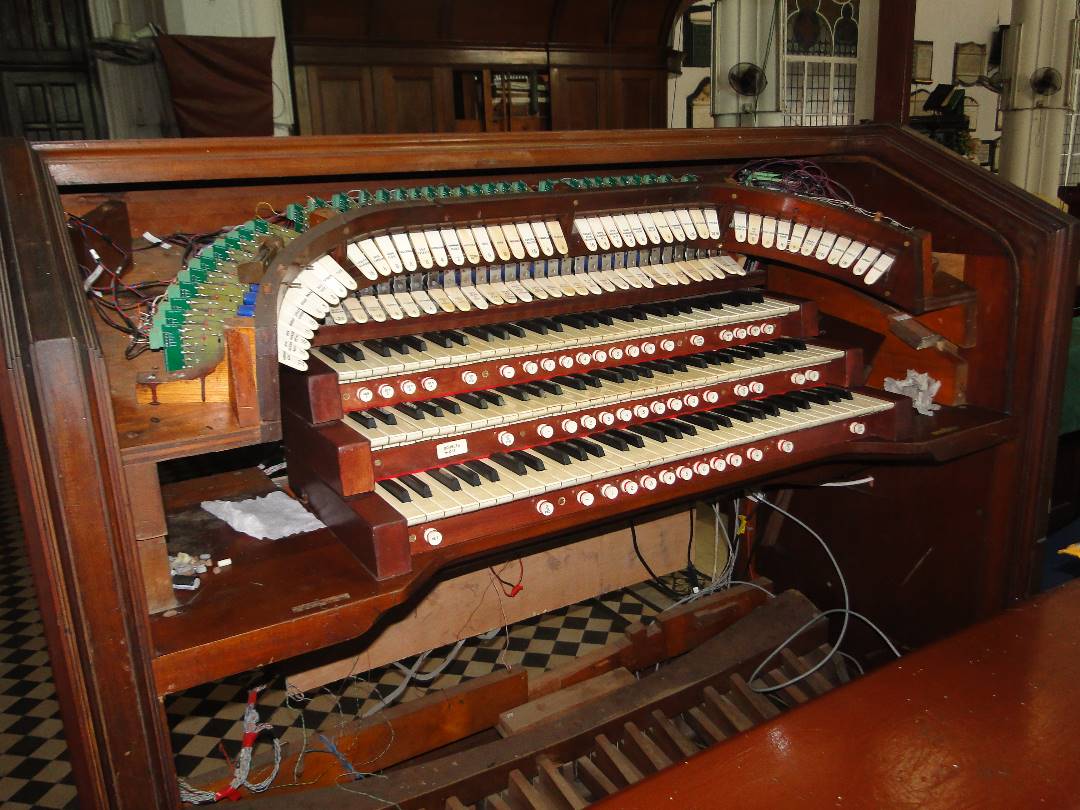
Arnold Awoonor-Gordon
Reprinted from: Sierra Leone Telegraph: 4 May 2017
St George’s Cathedral – one of Sierra Leone’s oldest churches, took eleven years to progress from the laying of the foundation stone on the 9th of January 1817, to the first service. Ever since then it has been a busy and important church – and not only for Sierra Leone.
At one time, the diocese of the Bishop of Sierra Leone on whose creation St. George’s became a Cathedral, spread across from Madeira, in the North and West, to Lagos in the South and East.
History tells us that Freetown was founded on three things: slaves, commerce and Christianity. Today, of the three, only Christianity and commerce survive.
The founding fathers
The founding fathers of Christianity in Freetown were the Church Missionary Society (CMS), which founded schools such as the Sierra Leone Grammar school, the Annie Walsh Memorial School, and and one of the most important Colleges on the continent for over a century – the Fourah Bay College – now known as the University of Sierra Leone.
The Church Missionary Society also established churches for the Christian education of the freed slaves.

One of the churches designed and built for the early Freetown Christians, St George’s Cathedral, celebrates its two hundred anniversary this year.
The need for a church in the centre of Freetown was felt as early as 1814, when the then Governor Lt. Colonel Maxwell, addressed two memorandum to the then Secretary of State for the Colonies the Earl of Bathurst. He told him that such a church should be constructed to the glory of God and for the edification of the people.
The cost
The cost of building the church was estimated at five thousand guineas. Her Majesty’s Government made available the money for that purpose. And on the 9th of January 1817, the foundation stone was laid by the new Governor, Sir Charles Macarthy, and a 21 gun salute was fired from Fort Thornton, now State House, in honour of the event.
Until the church was completed and dedicated, services were held each Sunday morning in the Court Room over the jailhouse, which stood on the site of the present Connaught hospital.
Before it was officially opened in 1827, the church was to undergo many changes in its design and construction. Its walls were pulled down twice: once because the building was considered too large. It was not until 1825 that serious work began, and the building was completed by the end of 1827.

The new church
The new church – named St George’s – after the patron saint of England, was consecrated and opened for worship on the 13th of January 1828. The Rev. C.L.F Haensel – the Bavarian Principal of Fourah Bay College, which had been founded by the CMS the previous year with Adjai Crowther (Photo) as its first student, preached the first sermon.
The church had a gallery running along three sides, but these were pulled down by another Governor – Sir Samuel Rowe, who complained that the children always made too much noise above his head.
From the outset, St. George’s was considered the Church of Government, and on St. Barnardas’ Day – June 11th, 1828, the first divine service was held for the opening of the Quarter Sessions of the Court of Sierra Leone.
Until 1852, the affairs of the church were conducted by the missionaries under the direction of the government, and no bishop was appointed until that year, when, in response to a request by the Governor to the Secretary of State for the Colonies, Queen Victoria, by Letters Patent, assented to the formation of a diocese in Sierra Leone in communion with the Church of England, and constituted the Bishop of Sierra Leone, a body corporate with perpetual succession.
The church then became St. George’s Cathedral, and the Diocese of Sierra Leone included The Gambia, Gold Coast – now Ghana, and Lagos, as well as the Islands of Madeira, the Canaries, Mauritania and Morocco.
Bishop Vidal
The first Bishop was the Reverend Owen Emeric Vidal, who arrived in December of that year with a party of six missionaries, amongst whom was the Reverend J.N. Graff, who was to become the first Archdeacon of Sierra Leone. The village of Grafton was named after him.
A year after arriving in the colony, Bishop Vidal held his first confirmation service when one thousand candidates, drawn from all parishes were confirmed. Although he died soon after of an attack or fever caught on a visit to his parish in Lagos, yet during that short period he made St. George’s Cathedral the most vital and fashionable church in the colony.

So fashionable did the cathedral become, that it attracted many worthy and wealthy citizens of other faiths, who made it fashionable to be married there.
Even Creoles of the Muslim faith, it is said, asked to be married in the cathedral.
The second bishop
The second bishop was the Right Rev. J.W. Weekes, who before his consecration was the schoolmaster at Regent, who with his wife, taught Adjai Crowther – the newly arrived recaptured boy slave, his ABC. He was the first to ordain citizens of the colony as priests.
For seventy years St. George’s Cathedral was supported by the Government. But in 1898, the press reacted sharply to the use of public funds for the support of one particular church.
The government had no option but to dis-establish the church and withdraw all financial support from the cathedral. An ordinance was passed making the Cathedral Chapter a corporate body with perpetual succession and common seal.
The church, as the property of the Crown, was transferred to the Cathedral Chapter with full powers of control, and ”powers to sue for all rents, subscriptions, fees or other monies due to or owing under any rules made by the Chapter”. That year St. George’s Cathedral became self-supporting and the Mother Church of the Diocese.

The Silent Workers and the Busy Bees
Women have played a vital role in the running of the affairs of the cathedral since its inception. They were divided into two groups: the ”Silent Workers” and the ”Busy Bees.” (Photo: St. George’s Cathedral today – 2017).
The latter went from home to home, office to office collecting funds for one purpose or other. They organised luncheon sales, concerts and other fund-raising activities. They were to be found in the Dorcas Association, the Ladies Missionary Guild and Mothers’ Union.
The Silent Workers were women who served the cathedral in an unobtrusive way, spending their money and their time in various ways in the interest of the church, without looking for recognition.

Many devoted their time to the cleaning of the cathedral on Fridays and Saturdays each week.
Whole families were responsible for cleaning various sections of the church, such as the chancel and alter, the Bishop’s throne, the pulpit and the lectern, while other families took charge of the main body of the church, the seats and floors.
These families had a strong feeling that the church belonged to them and that they belonged to the church.
The first bishop of Sierra Leonean descent was not consecrated until November 1961, as the twelfth Bishop of Sierra Leone.
A visit from Queen Elizabeth II
Bishop M.N.C.O. Scott’s episcopacy, opened with the visit of Queen Elizabeth 11 and Prince Philip.
By worshipping at the cathedral, the Queen enriched the church’s history, for it was her ancestor Queen Victoria who issued the Letters Patent for the establishment of St. George’s Cathedral, named after the patron saint of the country she reigned over, and which this year – 2017, is celebrating two hundred anniversary of its founding.









